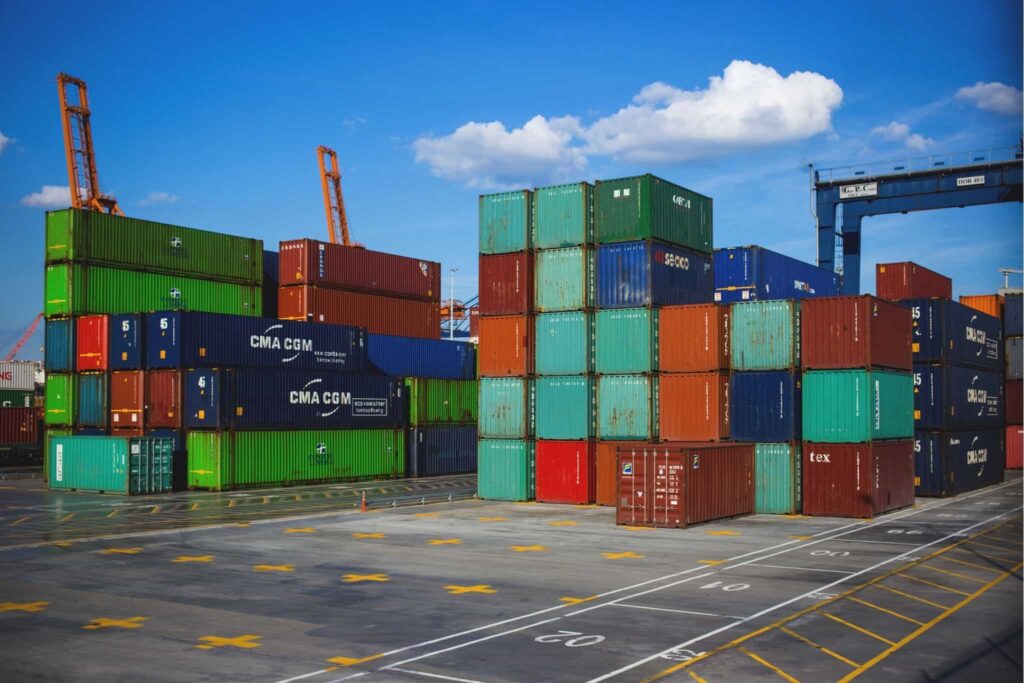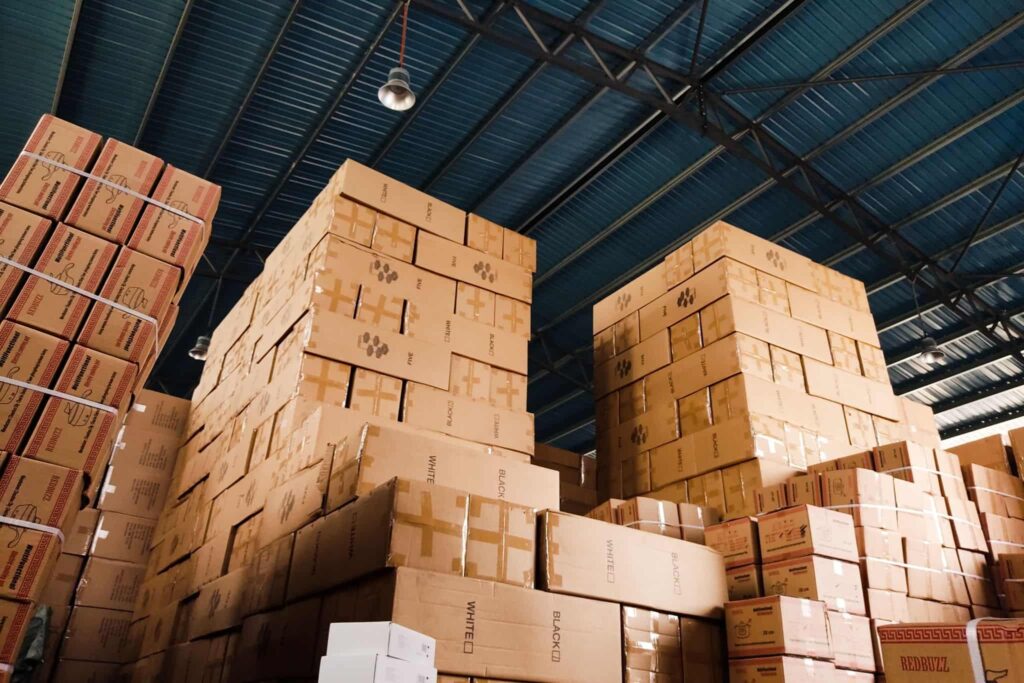In third-party logistics (3PL), managing inventory efficiently can make or break a business relationship. One method that consistently supports product quality, cost control, and customer satisfaction is FIFO—short for “First In, First Out.” This approach ensures that the oldest inventory is shipped out first, helping businesses avoid expired goods, outdated stock, or wasted space.
Here are six key insights every business should know when asking, What does FIFO refer to in a 3PL setting.
Table of Contents
Key Takeaways✔ FIFO stands for “First In, First Out” and ensures the oldest inventory is used or shipped first. ✔ The first-in-first-out inventory method reduces waste, improves product quality, and boosts customer satisfaction. ✔ FIFO is ideal for perishable, regulated, or high-turnover goods. ✔ Knowing what FIFO refers to helps businesses stay compliant and audit-ready. ✔ FIFO requires organized storage, clear labeling, and reliable warehouse systems. ✔ Working with a 3PL provider makes FIFO implementation smoother and more accurate. ✔ Key KPIs like turnover ratio and expired stock percentage help monitor FIFO success. ✔ FIFO may not fit all businesses, but it offers strong benefits for time-sensitive inventory. |

What Does FIFO Refer To in Third-Party Logistics?
In logistics, FIFO refers to the “First In, First Out” method of inventory management, where the oldest stock is the first to be used, picked, or shipped. This approach ensures that products are moved in the order they arrive, reducing the risk of expiration, spoilage, or obsolescence.
Businesses often choose FIFO when working with perishable goods, regulated products, or fast-moving consumer items. By keeping inventory flowing in a consistent, chronological manner, the FIFO system helps maintain product quality, improve traceability, and support accurate stock rotation.
What FIFO Stands For
1. FIFO Supports Product Quality and Customer Trust
The FIFO system helps move inventory in the right order, so older items don’t get stuck at the back of the shelf. This consistent flow improves how products are stored, handled, and delivered—especially in industries where freshness and safety matter most.
How FIFO Strengthens Inventory Movement and Product Reliability
- Prevents Outdated Stock from Reaching Customers: The first-in-first-out inventory method ensures that older items are picked and shipped before newer ones. This reduces the chances of sending expired or worn-out products to buyers, protecting the brand’s reputation.
- Improves Quality Control in Storage: FIFO forces regular movement of goods, which keeps warehouse teams alert to changes in packaging, temperature damage, or labeling issues. Problems are more likely to be spotted early when inventory isn’t sitting for months untouched.
- Builds Customer Trust Through Consistent Fulfillment: When customers receive fresh products, correctly labeled and damage-free, they are more likely to reorder. FIFO helps make this reliability possible by keeping the supply chain predictable and transparent.
2. FIFO Simplifies Regulatory Compliance and Traceability
Many industries operate under strict product handling, labeling, and expiration tracking guidelines. Understanding what FIFO refers to is essential for businesses navigating FDA regulations, food safety audits, or pharmaceutical distribution standards. FIFO helps maintain order in inventory records and simplifies tracking when products are recalled or inspected.
How FIFO Enhances Transparency and Meets Industry Requirements
- Supports Accurate Lot Tracking and Documentation: The FIFO method traces products back to their origin. For example, if a batch of medicine is recalled, FIFO ensures the team knows exactly when it entered the warehouse and where it went.
- Aligns With FDA and ISO Standards: Many regulatory bodies require that companies rotate stock and show clear audit trails. FIFO stands for more than just organization—it helps prove compliance through consistent inventory movement.
- Minimizes Legal and Financial Risks: FIFO reduces the chance of selling expired or non-compliant products, which can lead to penalties or customer lawsuits. Businesses that use FIFO protect themselves by following a method that’s trusted across highly regulated industries.
3. FIFO Helps 3PL Providers Reduce Warehouse Congestion
When inventory isn’t managed properly, it clutters the floor and complicates daily operations. A business that understands what FIFO requires knows it demands clear labeling, organized racking, and planned flow paths. 3PLs that use FIFO reduce congestion, improve safety, and make faster use of their space.
How FIFO Creates a More Efficient Warehouse Environment
- Promotes Streamlined Picking Paths: With FIFO, products are stored and accessed in a logical order, reducing unnecessary walking or double-handling. For example, fast-moving goods are placed near outbound zones to shorten pick times.
- Prevents Bottlenecks During Peak Seasons: The first in first out inventory method keeps goods moving, which helps avoid overflow when volume spikes. This is especially useful during holidays or promotional surges in e-commerce.
- Improves Equipment and Labor Utilization: FIFO lets warehouse managers plan shifts and forklift use more efficiently. With clearer access paths and predictable turnover, fewer resources are wasted moving around disorganized stock.
4. FIFO Works Best With the Right Warehouse Technology
Businesses asking what does FIFO require often overlook the tech side of the equation. Successful FIFO execution depends on tools that support real-time visibility, scanning accuracy, and system-driven order picking. Without that digital backbone, FIFO turns into guesswork. Integrating AI technology strengthens that foundation, enabling logistics systems to operate even more swiftly and effectively.
How Technology Makes FIFO Scalable and Accurate
- Enhances Visibility With Warehouse Management Systems (WMS): A WMS helps teams see which items came in first and alerts them when those items should go out. For instance, it can flag slow-moving stock and recommend re-slotting.
- Supports FIFO Logic in Automated Picking: Conveyor belts and robotics in modern 3PLs are often programmed to follow FIFO rules. This removes human error and ensures product flow stays consistent across all shifts.
- Enables Barcode and RFID Tracking: Scanning tools mark timestamps on incoming goods and update their status throughout storage. That data is essential for applying the first in first out inventory method across large and varied inventories.
5. FIFO Reduces Shrinkage and Increases Profitability
Shrinkage—whether from theft, damage, or expiration—cuts into margins and erodes inventory trust. Knowing what FIFO refers to gives businesses a system to prevent that loss. FIFO adds control to stock movement, making it harder for items to vanish or sit unnoticed until they’re no longer sellable.
How FIFO Protects Inventory Value Over Time
- Reduces Expired or Obsolete Inventory: When goods move in a consistent order, fewer items expire before sale. For example, snacks with short shelf lives are rotated and shipped efficiently with FIFO, avoiding unnecessary write-offs.
- Prevents Overbuying and Overstocking: FIFO highlights how much older inventory is left, guiding smarter purchasing decisions. Businesses can stop stockpiling new items while older ones remain unused in the back.
- Strengthens Internal Controls and Audit Readiness: FIFO helps uncover irregularities in inventory counts, making fraud or system issues easier to detect. Over time, this tighter control leads to higher margins and fewer surprises during audits.
6. FIFO Aligns With Customer Expectations and Modern Fulfillment
Today’s buyers expect fresh, high-quality, and accurately filled orders. Whether shipping directly to consumers or restocking retail partners, businesses need systems that support that standard. FIFO stands for a practical, trusted way to keep fulfillment timelines sharp and customer satisfaction high.
How FIFO Connects Inventory Strategy to Customer Experience
- Ensures Consistent Product Experience: When goods are shipped in the order they’re received, quality remains steady. For example, a skincare brand using the first in first out inventory method avoids sending older versions of a formula to some customers and newer ones to others.
- Supports Accurate Forecasting and Restocking: FIFO provides a real-time view of what’s moving and what isn’t. That insight helps businesses stay ahead of demand and prevents stockouts during promotions or high seasons.
- Improves Return Handling and Replacements: With FIFO tracking, returns are easier to match to original shipments. This allows 3PLs to process exchanges quickly and keep customer service teams informed, preserving trust after a sale.
How to Know If FIFO Is Right for a Business
The global 3PL market reached an estimated $1,095.85 billion in 2023—a reflection of the sector’s growing complexity and demand for strategic inventory management. FIFO may be one of the most popular inventory systems used in third-party logistics, but it isn’t always the best fit for every business. Understanding what FIFO refers to is only the first step—leaders need to evaluate whether it supports their products, customer expectations, and long-term goals.
Below are six key areas to consider when deciding if the first-in, first-out inventory method makes sense for a specific operation:
1. Product Shelf Life and Expiration Sensitivity
FIFO ensures that businesses handle goods with clear expiration dates—such as food, supplements, or medical products. This means that the oldest stock is used first, reducing waste and protecting customer health. Companies that overlook this step risk non-compliance, recalls, and reputational damage.
2. Volume and Turnover Rate
High-turnover environments benefit most from FIFO because inventory is always moving. When stock enters and exits quickly, FIFO helps maintain order and prevents errors from rushed picking processes. A professional 3PL can design systems that scale with demand while maintaining FIFO accuracy.
3. Storage Conditions and Product Stability
If a product can degrade over time due to temperature, humidity, or packaging sensitivity, FIFO becomes more valuable. For example, cosmetic items and skincare can lose efficacy if stored too long, even without expiration dates. Understanding what FIFO requires includes knowing whether product stability is tied to time on the shelf.
4. Order Accuracy and Customer Experience
FIFO plays a major role in making sure customers receive consistent, fresh, and high-quality products. This is especially important for direct-to-consumer fulfillment, where customers notice differences in packaging or shelf life. Businesses working with 3PL professionals can use FIFO to build a reputation for reliability and trust.
5. Regulatory and Industry Requirements
Some industries practically require FIFO for compliance. Pharmaceutical, food, and even some electronics businesses need full traceability, which FIFO supports through accurate records of when each item entered and exited storage. Working with a 3PL that understands what FIFO refers to from a compliance standpoint is critical in these cases.
6. Technology and Operational Readiness
FIFO demands more than just good intentions—it needs systems to back it up. Companies must have warehouse management tools, barcode scanning, and trained staff who follow FIFO logic day in and day out. A qualified logistics partner can assess these needs and help implement the process smoothly and effectively.
How to Monitor FIFO Success with KPIs
Implementing the first in first out inventory method is only part of the equation—knowing if it’s working is what makes the investment worthwhile. Business owners who understand what FIFO refers to also need tools to measure performance, uncover issues, and improve results over time. Tracking key performance indicators (KPIs) with the help of an experienced 3PL partner makes it easier to catch inefficiencies and strengthen operations.
1. Inventory Turnover Ratio
This metric shows how many times inventory is sold and replaced over a period of time. A healthy turnover ratio indicates that FIFO is keeping goods moving and preventing the buildup of old stock. If the number is too low, it could mean products are aging on shelves or FIFO is being bypassed.
2. Average Days in Inventory
This KPI measures how long items stay in storage before being shipped. When FIFO is working well, older items should consistently move out within the expected shelf-life window. Working with a 3PL ensures this timeline is monitored, reported, and adjusted as needed.
3. Order Accuracy Rate
Accurate order fulfillment reflects whether FIFO is being applied correctly in picking and packing. A drop in accuracy may point to staff pulling newer items first, or inventory data not matching real-time stock locations. An experienced logistics partner can catch these breakdowns early with regular audits.
4. Expired or Unsellable Stock Percentage
Tracking how much inventory becomes expired, damaged, or unsellable helps businesses see if FIFO is reducing waste. If this number remains high, the system may not be rotating inventory as intended. Understanding what FIFO requires includes reviewing these losses and identifying where the breakdown occurs.
5. Slotting Compliance and Warehouse Flow
This measures whether items are being stored and picked according to FIFO protocols. Products stored in the wrong locations can disrupt the entire flow and lead to mispicks. A professional 3PL will review layout design, signage, and slotting reports to make sure the FIFO method runs smoothly.
6. Returns and Customer Complaints Related to Product Quality
A rise in complaints about product freshness or discrepancies often signals that older inventory is being skipped. FIFO stands for consistency in customer experience, and these returns tell a story about whether that promise is being kept. Monitoring return reasons helps companies improve both customer service and inventory rotation.
Frequently Asked Questions (FAQs)

Is FIFO or LIFO better?
FIFO is generally better for businesses that manage perishable goods, regulated products, or time-sensitive inventory, as it reduces spoilage and supports compliance. LIFO, on the other hand, may offer short-term tax advantages in inflationary periods but doesn’t support product freshness. The best choice depends on the nature of the inventory, industry standards, and business goals.
What is the formula for first in first out inventory?
The basic FIFO formula for calculating cost of goods sold (COGS) is:
COGS = Cost of oldest inventory × Quantity sold.
This method assumes the earliest items purchased or produced are the first ones sold, so the oldest unit costs are used to calculate expenses and profits.
Which items should be rejected upon delivery?
Items should be rejected if they are damaged, expired, mislabeled, or outside acceptable temperature ranges. Products that don’t match purchase order details—such as incorrect quantities, brands, or packaging—should also be flagged. A strong FIFO system starts with proper receiving and rejection processes to avoid contaminating usable stock.
What are the disadvantages of using FIFO?
One downside of FIFO is that it may overstate profits during times of rising costs, leading to higher tax liability. It also requires more organization and space to keep older inventory accessible, especially in large warehouses. If not properly managed, FIFO can result in operational inefficiencies or mispicks.
Which inventory method is best?
The best inventory method depends on the type of product, industry regulations, and business priorities. FIFO is ideal for goods that expire or degrade, while LIFO may suit businesses focused on reducing taxable income. Companies unsure of what to use should consult with a logistics professional to evaluate which method aligns with their operations.

Streamline Inventory with 3PL Logistics By Best in NYC
At 3PL Logistics By Best, we help New York City businesses take control of their inventory with smart, dependable logistics solutions tailored to their industry. Whether it’s managing stock through the first in first out inventory method or optimizing warehouse space for faster order fulfillment, our team builds systems that work in real time—so nothing sits, spoils, or slows you down. From e-commerce brands to healthcare suppliers, we bring hands-on experience, advanced tech, and local insight to every partnership.
Let us handle the logistics so you can focus on scaling with confidence.

